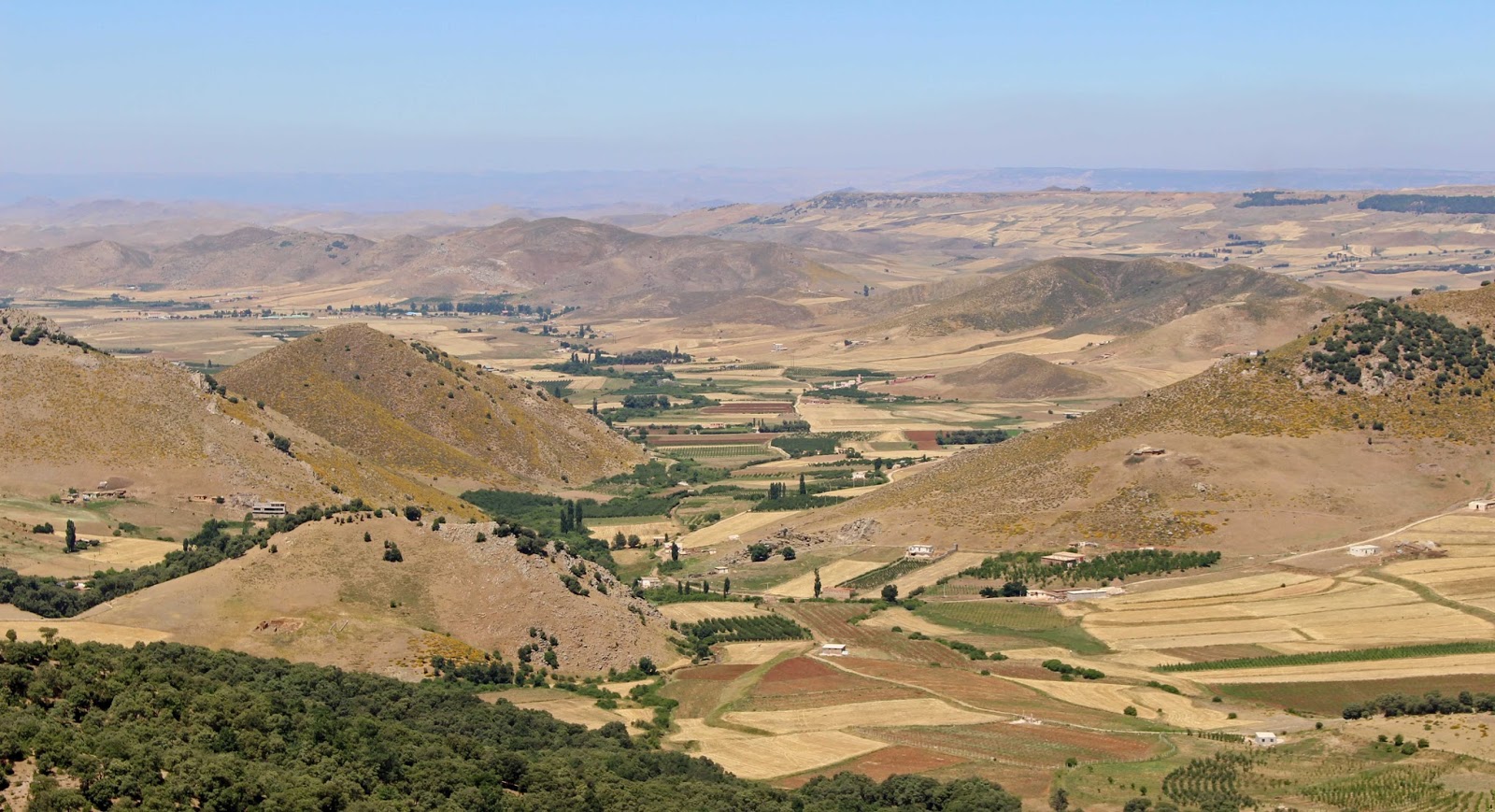We left Fes at 9am for a long day of travel, but with lots of
interesting stops.
We climbed up and
through the Middle Atlas mountains, covered in cedar trees – some up to 300
years old – and Holm oaks, which are native to these parts. Our first stop was at
one of the many mountain lakes, a picturesque spot, with lots of water birds
and dragon flies, nice reflections in the water, and enterprising locals looking
to make a dirham or two by allowing visitors to pose for photos on their
colourfully bedecked horses. Even though we deliberately parked a mile or more
away, they quickly came galloping over.
Our next stop was for
drinks and cakes at Ifrane, a little slice of Switzerland
transplanted to Morocco Fes
seeking to escape the 40 degree summer heat, as well as for those wanting to
trek and partake in winter sports. As it snows there in the winter, rather than
the usual flat roofs, the houses are tall and peaked and look more European,
especially with the huge stork nests propped against roof peaks and chimney
stacks. The town also sports a large statue of a lion, a Barbary
lion – yes, they did once have lions roaming these mountains and, though now
extinct in the wild, some still survive in captivity. The Barbary Lion Project
aims, eventually, to breed enough lions to release back into the wild.
As well as the Barbary
Lion, there is also a Barbary Ape or Macaque, and we saw lots of these little
critters by the roadside as we continued our journey. People feed them so,
naturally, they come to the roads to scavenge and beg for food. As you can
imagine, we all took lots of photographs, as they were very cute.
The Middle Atlas are
big mountains and the countryside is quite rugged and barren. Still, in places we
saw donkeys standing by the roadside. Their owners had caught passing taxis and
buses to the weekly market in their nearest local town and would return later
in the day to load their purchases on to the donkeys for the journey home – not
much in the way of local roads here. And this is also an area where nomads
roam, grazing their flocks of sheep and goats in one place for a few days
before moving themselves, their tents and their animals on to the next plain or
valley. It’s a way of life that has continued for centuries in these parts.
We descended through a
dramatic gorge at 2000 metres absl and continued across a high plateau at 1600
metres absl where we stopped at a local town for lunch. Both the goat and the
sheep tagines were delicious – parts of the goat, including its head, were
still hanging up in the butcher’s stall just outside the restaurant so we were reassured that
the meat was fresh that morning!
Our last stop of the
day was at Atelier Kasbah Myriem, adjoining the Monastery of Notre Dame in the
Atlas. Franciscan nuns established a convent in this place in 1926 and, in an
enlightened example of inter-faith cooperation, began teaching the local girls
and women how to embroider. Though only two nuns now remain – and they are too old
to teach, and the convent has become a monastery for Trappist monks, the embroidery
and weaving workshop continues, allowing local women to pass their skills on to
the next generation and to earn some money from their exquisite work. Shopping!
It was a short drive
from there to our overnight accommodation, in a Kasbah just outside Berem, a
small town about 6kms west of Midelt. We got settled, then Issam led us on a
walk to see the dramatic river gorge where the old part of the town sits. The
younger Intrepid travellers were scampering along the edge like mountain goats
but not me … it was steep and the rock crumbly … better to be safe than sorry.
As we walked through the ancient town of mud-brick houses, we met a local grandfather
who Issam knew and were immediately invited into his family’s home to share mint
tea and bread. He, his daughter and grandson were very welcoming and it was
wonderful to hear him speak (with Issam translating) of his life as a nomad
sheep herder. He had only recently bought the house, for his family and his old
age, but still missed the nomadic lifestyle. It was a wonderful way to bring
another great Moroccan day to a close.











No comments:
Post a Comment